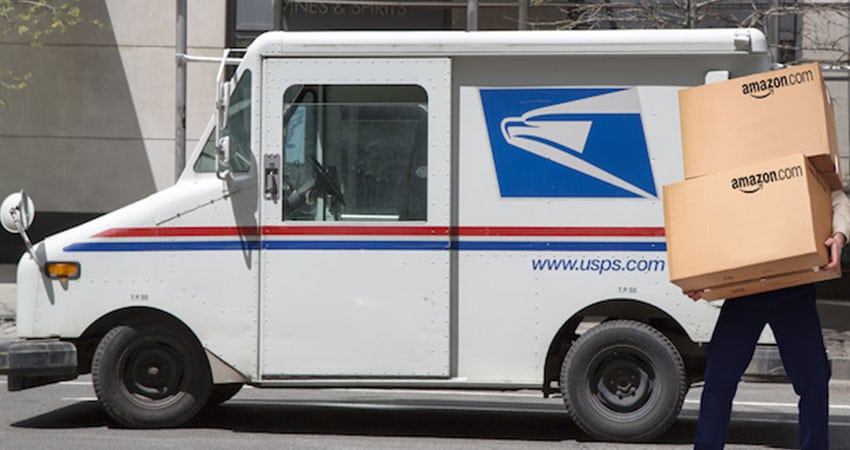President Trump has taken a break from favorite targets like Little Rocket Man to turn his Twitter fire and ire on the U.S. Postal Service, blasting the agency for not charging enough on parcel delivery, in particular singling out major client Amazon, as the USPS continues to hemorrhage cash.
“Why is the United States Post Office, which is losing many billions of dollars a year, while charging Amazon and others so little to deliver their packages, making Amazon richer and the Post Office dumber and poorer? Should be charging MUCH MORE!”, Trump opined on Twitter. The USPS and Amazon have not commented on the tweet.
It should be noted that Trump is a frequent critic of the Washington Post, which is owned by Amazon CEO Jeff Bezos, and that both publication and owner have been in the crosshairs of the tweeter-in-chief.
As you might expect, Trump’s tweet has created a storm of reaction and reignited the debate over the USPS’s future and how to fix it. Letter volume continues to drop even as parcel shipping enjoys double-digit growth at USPS, and the massive pre-funding of retiree pensions leave it perpetually in the red. The USPS’s 2017 net loss was $2.7 billion, its 11th straight year in negative territory.
An April 2017 research note from Citigroup estimated the USPS would have to raise its average parcel delivery rate by 40% or $1.40 in order to reflect the true cost of delivery. Of course, such a move would be far outside the range of PRC approval, and even if granted would cause a massive flight of retail and ecommerce customers to competitors such as UPS and FedEx.
The volume of first-class mail handled by the USPS was 19.7 billion in 2016, down 4.8% from 2015 and less than half of the 42.3 billion items it handled in 2007; it’s also down 40% from a peak in 2000. At the same time parcel volume was up 16% to 5.2 billion in 2016.
There will be some relief coming in 2018, although not nearly enough to fix the balance sheet problem. Last month the Postal Regulatory Authority allowed the USPS to raise the cost of a first-class stamp, now at 49 cents, to 2% above the rate of inflation, which a 2006 law used as a cap for its increases. This is expected to eventually raise the cost of parcel shipping as well as magazines, prescriptions and other forms of mail.
Regarding Amazon, the USPS has been accused in the recent past of providing the world’s top ecommerce shipper with special rates and thus creating an unfair advantage against other retailers, a charge that both deny. The USPS has been making deliveries for Amazon and other major retailers seven days a week, a practice that is stepped up around the holidays.
Tim Sailor, owner of parcel advisory Navigo Consulting, said Trump could do a lot to help the USPS cure its woes by pushing Congress to approve the Postal Reform Act, which has been loitering in the halls for over a year. Among other things, it would free the USPS from some of the burden of pre-funded pensions by switching some retirees to Medicare. Critics believe the reform doesn’t go far enough and is a Band-Aid on a bleeding wound.
“The pension fix makes sense; singling out Amazon does not,” Sailor said. “My belief is that Amazon has lower shipping costs because of volume and work share discounts. Also, their shipments have lower costs because they have predominately regional deliveries and inductions, not as many Zone 8 national shipments that UPS SurePost and FedEx SmartPost have.” The latter are last-mile services that USPS provides for the major carriers.
Jerry Hempstead, principal of Hempstead Consulting, agreed with Trump that the USPS could charge more for the Parcel Select last-mile services it provides for FedEx and UPS as well as DHL eCommerce and Newgistics, now part of Pitney Bowes. But by tinkering with those agreements and their negotiated discount rates, it would risk a migration of volume as carriers seek other means of handling the last mile, including doing it themselves.
“So in some respects the president is right in that the USPS has subsidized some of the financial success of (the carriers) and most likely could have charged more,” Hempstead said. “But there is a tipping point where the costs of accomplishing the last mile delivery by other means is less and the USPS will be scrambling to replace that lost revenue as well.”

